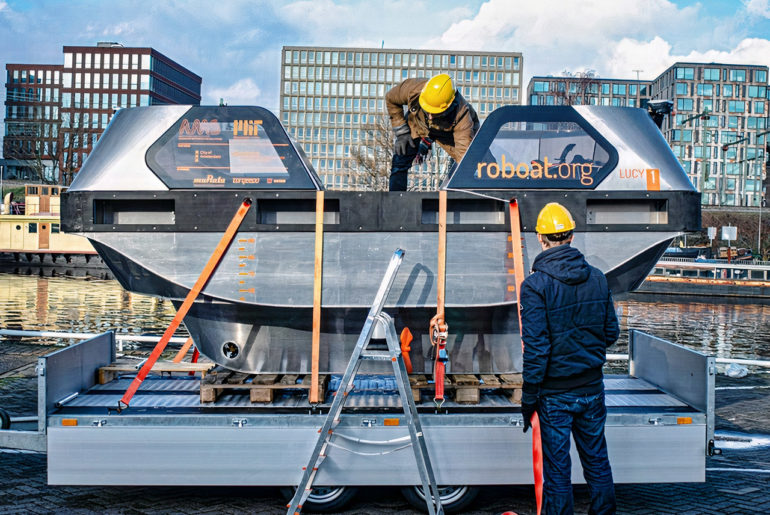
MIT’s Computer Science and Artificial Intelligence Laboratory (CSAIL) partnered with the Amsterdam Institute for Advanced Metropolitan Solutions (AMS Institute) to develop a fully autonomous robotic boat capable of navigating narrow canals. The first iteration of Roboat was introduced back in 2015, but since then, two full-scale prototypes have been launched, capable of carrying up to five people.
Aesthetically, the boat features a black and gray chassis, complete with two seats that face each other. It boasts a battery-powered drivetrain is good for up to 10-hours of continuous use, complete with wireless charging capabilities. Navigation requires the use of GPS, perception and control software. Roboat continuously scans the environment to avoid collisions with objects, like bridges, while LiDAR as well as multiple cameras, provide a 360° view.
- 𝗟𝗶𝗴𝗵𝘁𝘄𝗲𝗶𝗴𝗵𝘁 𝗮𝗻𝗱 𝗣𝗼𝗿𝘁𝗮𝗯𝗹𝗲 - The drone is lightweight and compact, weighing...
- 𝗡𝗼 𝗥𝗲𝗴𝗶𝘀𝘁𝗿𝗮𝘁𝗶𝗼𝗻 𝗡𝗲𝗲𝗱𝗲𝗱 - Under 249 g, FAA Registration and Remote ID are not required if...
- 𝗘𝘅𝘁𝗲𝗻𝗱𝗲𝗱 𝗙𝗹𝗶𝗴𝗵𝘁 𝗧𝗶𝗺𝗲 - Enjoy longer flights with DJI Mini 2 SE, which offers a 31-min max flight...
We now have higher precision and robustness in the perception, navigation, and control systems, including new functions, such as close-proximity approach mode for latching capabilities, and improved dynamic positioning, so the boat can navigate real-world waters. Roboat’s control system is adaptive to the number of people in the boat,” said Daniela Rus, MIT professor of electrical engineering and computer science and director of CSAIL.



